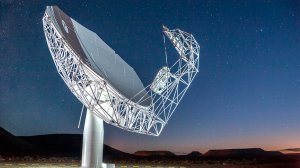Science and Technology Minister Naledi Pandor has highlighted some of the achievements of the flagship projects of the Department of Science and Technology. She was speaking at her Budget Vote media conference on Thursday.
There are four flagship programmes. These are the Technology Localisation Programme, the Technology Innovation Agency (TIA) the MeerKAT radio telescope array (which is also a precursor to the international Square Kilometre Array, or SKA, radio telescope) and the Indigenous Knowledge-based Innovation Programme.
Pandor described the Technology Localisation Programme as “a very exciting programme that is achieving excellent results”. This started in 2011 and will receive R524-million during the current financial year (2015/2016). It strengthens the technological capabilities of South African companies so that they take part in public procurement programmes.
“We’ve assisted over 140 local manufacturing companies so far,” she pointed out. “New jobs have been created and 20 companies have secured new contracts with State-owned enterprises. The intention is to build the capabilities of small and medium-sized companies so that they can participate in big programmes.”
The TIA is assigned R385-million for this financial year. “It has implemented a successful turnaround strategy and now has a new CEO,” she noted. “I believe that the agency will demonstrate further improvement. The TIA has now been effectively repositioned to help innovators, entrepreneurs and small and medium enterprises [SMEs] to commercialise their technology innovations.”
The TIA has provided support to more than 8 130 SMEs since 2010. One of these companies, biotech start-up Kapa Biosystems, has negotiated to buy out TIA’s shareholding in its South African subsidiary for $4.93-million (about R57.9-million).
“We remain on track for timeframes for the MeerKAT and for the timeframes for the SKA,” she reported. “We remain on track. Our MeerKAT will have 64 antennas and will increase from four dishes in 2014/[20]15 to 32 in 2015/[20]16.” In addition, so far more than 700 students and postdoctoral fellows have been funded by means of the SKA SA Bursary and Scholarship Programme and the National Astrophysics and Space Physics Programme.
The Indigenous Knowledge-Based Innovation Programme will see the setting up of three community-based businesses this year. This programme has successfully fed into various DST projects. “In the fields of health innovation and the bioeconomy, through partnerships with industry in the pharmaceutical sector and the agricultural sector – for example through our work in indigenous knowledge – we have registered seven patents, supported 20 PhDs and 39 Master’s students, created 133 jobs and trained 198 community members in technology transfer and skills development. We have established two agri-businesses and signed intellectual property agreements with L’Oréal, Nestlé, Kalahari, Nativa and several other companies.”
Although not highlighted as a flagship programme in its own right, Pandor also directed attention to the progress made in the hydrogen fuel cell project. “We have R80-million allocated to develop hydrogen fuel cell generator prototypes, for uninterrupted power.” These are also to provide off-grid power. A few prototypes are already in use, at the Western Cape Nature Reserve, the Windsor East Clinic in Randburg (in north west Johannesburg) and at three schools in the Eastern Cape.
EMAIL THIS ARTICLE SAVE THIS ARTICLE
To subscribe email subscriptions@creamermedia.co.za or click here
To advertise email advertising@creamermedia.co.za or click here











